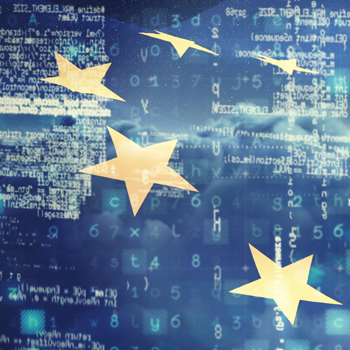Why Europe needs a water resilience strategy

One quarter of the global population is currently facing an unprecedented level of water stress. Europe is no exception: as a result of the rising temperatures dictated by climate change, water scarcity is already a reality for many Europeans. The European Commission‘s findings that 38% of the EU population and 29% of the EU territory were in 2019. In summer 2022, the European Drought Observatory’s report that approximately 44% of continental Europe was in a warning state and about 9% in an alert state, underlining the urgency of this issue in our region. According to the World Resources Institute, in 2023 Cyprus, Belgium and Greece ranked among the 25 extremely water-stressed countries, followed by Spain, Italy, Portugal and Luxembourg which made it to the top 50 as countries with a medium to high water stress level. And Catalonia just declared drought emergency.
The catastrophic state of biodiversity is the first signal that the water cycle is broken. The imperative for Europe is clear: to confront climate change effectively, we must adopt a holistic and integrated approach to water management. This approach must not only consider the availability and quality of water but also ensure its accessibility and affordability for all. The announcement of a Water Resilience Initiative by President von der Leyen, expected on the 12th of March, is a step in the right direction. However, it is just the beginning of what needs to be a comprehensive European strategy and sustained effort to address the multifaceted challenges water scarcity poses.
Here are some of the most salient challenges that Europe will have to address:
How to reduce the gap between supply and demand and avoid tensions over access to water between sectors? Projections suggest that by the end of 2030, global demand for freshwater will exceed supply by a staggering 40%, highlighting the pressing need for immediate action. With a burgeoning population and increasing demand for the green and digital transition —like renewables, hydrogen, semiconductors- the strain on our water resources is intensifying. This growing demand threatens not only Europe’s food security but also the continuity of business operations, especially those in energy-intensive sectors, logistics, and data centres.
How to balance infrastructure and climate adaptation? The management, transportation, and storage of water are increasingly becoming sources of tension. On one hand, there is a need to ensure that infrastructure is robust, interconnected, and efficient, preventing leakages in water supply and distribution systems. On the other hand, new infrastructure plans, such as large dams, water storage, and water diversion schemes, pose significant risks to nature conservation efforts. Balancing these competing needs is essential for climate adaptation and requires innovative solutions.
How to finance water resilience measures? Funding water resilience measures will pose another challenge. As Currently, EU resources dedicated to water are spread across various funds (e.g. LIFE, Horizon Europe), with a focus primarily on research and innovation. This approach needs revaluation to ensure that financing is targeted, effective, and capable of addressing challenges holistically related to water management.
In a water-stressed future, every drop counts. The forthcoming Water Resilience Initiative signifies an essential acknowledgment of the problem and an EU commitment to seeking common solutions. With significant institutional changes on the horizon in 2024, the time to act is now.
The initiative must lay the groundwork for concrete and integrated policy measures at the EU level. Recognising water as a strategic resource is crucial, as is the integration of water and the “water efficiency first” principle in all policy areas. The path forward is challenging, but with a shared effort, strategic planning, and the political will to implement necessary changes, Europe can navigate difficult waters and build a water-resilient future.
-

With 15 years of experience in sustainability, strategy, advocacy and communications, Coline joined FleishmanHillard in 2022 as Vice President and Associate Director to lead the Environment and Chemicals team. She specializes in circular economy and environment policies, advising clients advocacy campaigns and government relations practice....
Find Out More
-
Buckle up for 2022: the year of connected mobility
February 8, 2022
-
2022 is set to be another big year for EU Digital Policy
January 27, 2022
-
Stay up to date on the REACH Revision with the FH timeline
December 17, 2021


